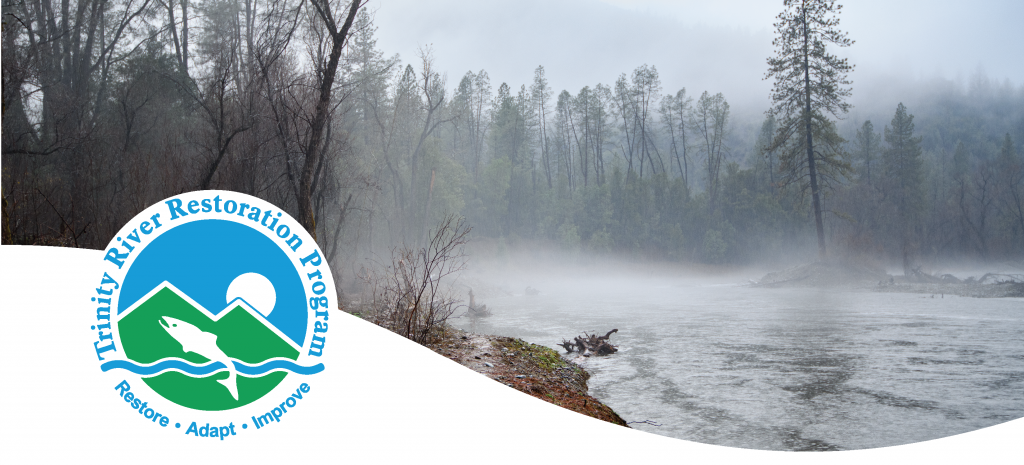
Header photo provided by Michael Burke, Reclamation
River Riffle Newsletter – January
Contents
- Program Update
- Implementation Branch Update
- Featured Article: Algae, Food-Webs, and Flows
- Trinity River Watershed: Plant Spotlight
- Upcoming Meetings and Events
Important Links
Trinity River Survey – Survey closes January 31, 2024
Klamath Basin Salmon Restoration 2024 Request for Proposals
Photos from the Oregon Gulch Ribbon Cutting. December 19, 2023
‘Like a Dead Zone’: Undoing Decades of Environmental Harm on a California River. Juliet Grable. December 11, 2023. The Revelator.
Trinity River Restoration marks completion of Oregon Gulch project. January 3, 2024. The Jefferson Exchange.
Water Year 2023 Summary: A review of a historic year in California and Nevada. January 3, 2024. California-Nevada River Forecast Center
Program Update
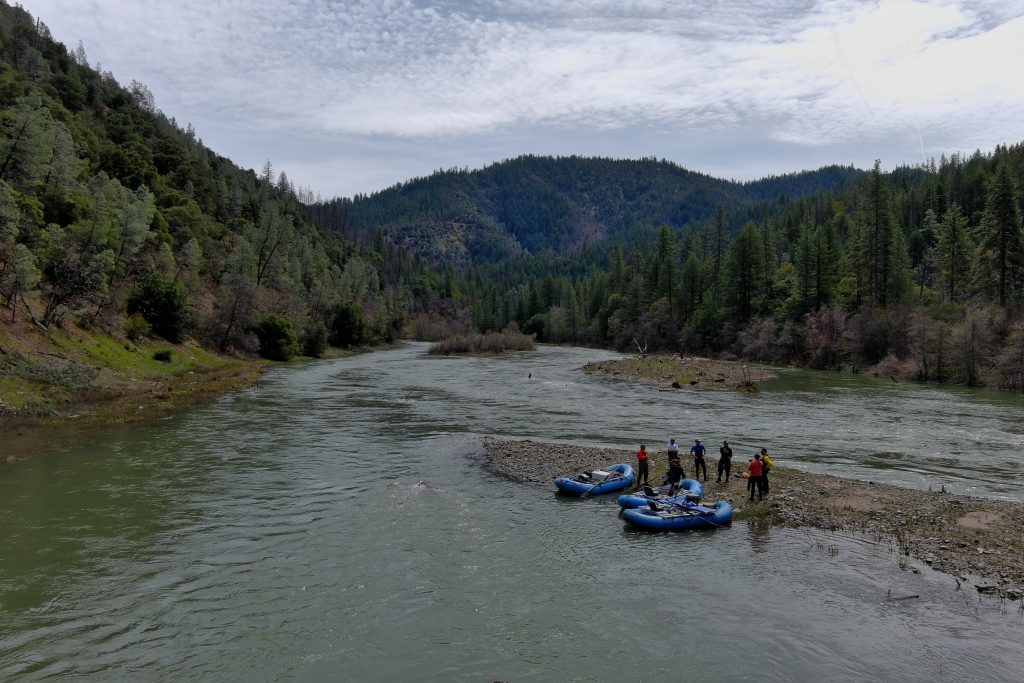
Since the foundational 1999 Trinity River Flow Evaluation Report, decades of scientific research have poured into improving outcomes for Salmonids, both from within the Trinity River Basin and from rivers researched across the world. The cumulation of data has made scientists within the Program increasingly aware that shifting how the Program uses restoration flow allocation has the potential to lead to stronger and more resilient juvenile salmonids.
Photo: Survey crews monitoring the interaction between high flows and recently restored floodplain on the Trinity River in April of 2023. [Aaron Martin, Yurok Tribal Fisheries Department]
Implementation Branch Update
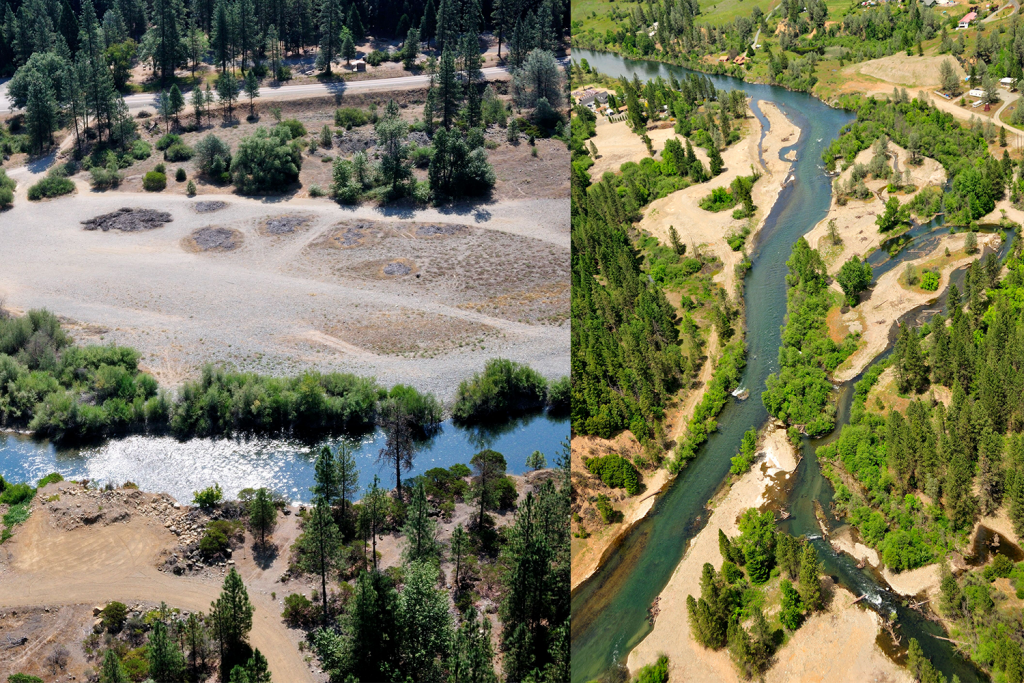
With winter fully here and the holidays behind us, the Implementation Branch is moving forward with some exciting restoration proposals. In recent past the TRRP publicly scoped two proposed channel rehabilitation projects, the Upper Conner Creek Rehabilitation Project in Junction City and the Sawmill Gravel Processing Site Project in Lewiston. A draft environmental assessment (EA) will be released in the coming weeks, and then the Implementation Branch and those involved in the project will host a public meeting to discuss the proposed designs and restoration activities. Keep an eye on our calendar or our facebook page for notification of that meeting. We hope to see you there.
Featured Article
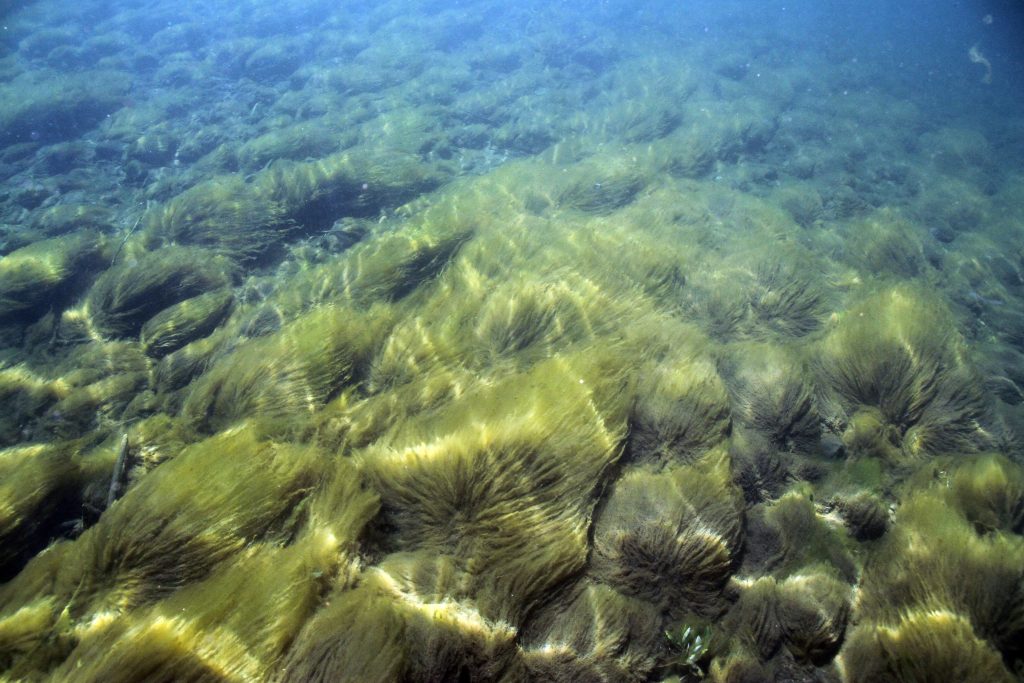
Algae, Food-Webs, and Flows
Algae are an important component of a natural river ecosystem. They photosynthesize, converting light into sugar for usable biological energy that forms the foundation of most foodwebs. Cold, oligotrophic (nutrient-poor) rivers such as the Trinity are generally not perceived as having a lot of algae. Back in 2018 a bloom of algae in the ‘restoration reach’ of the Trinity (roughly Lewiston to Helena) raised concerns; the bloom brought greater visibility of algae than we had seen in the Trinity in recent memory.
Photo: Filamentous algae found near Indian Creek, a tributary to the Trinity River [Thomas Dunklin]
Trinity River Watershed: Plant Spotlight
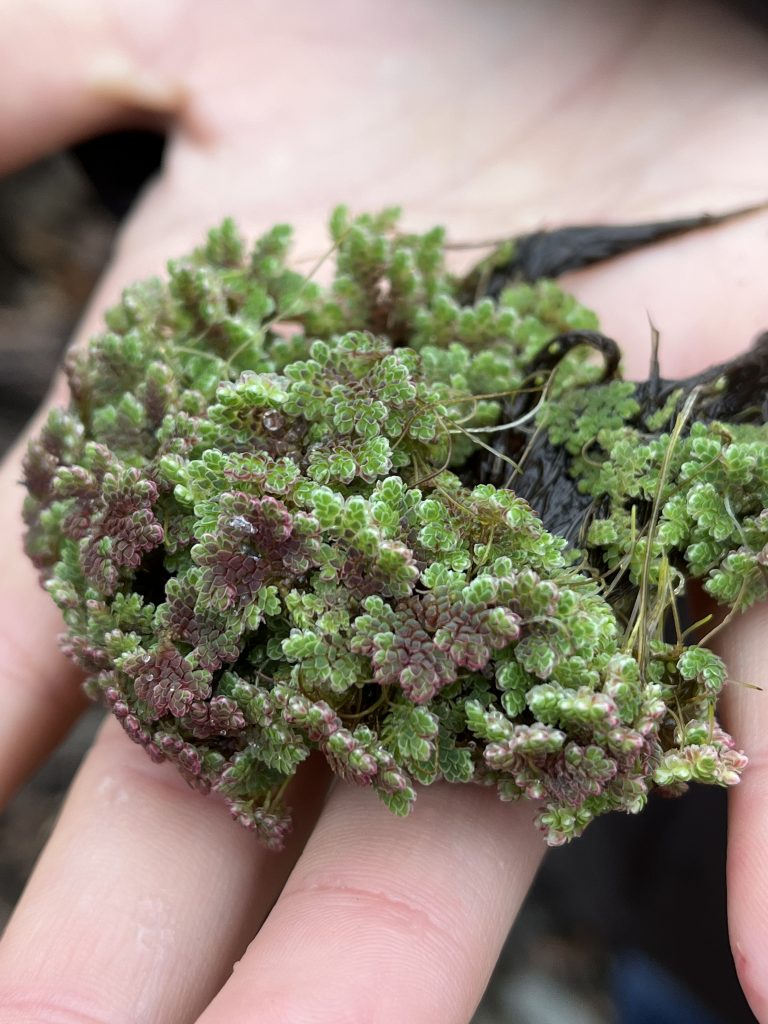
Water fern
Azolla filiculoides
There are various native plant species that cover the surface of stagnant or slow-moving water. One of these species is called water fern (Azolla filiculoides). Not to be confused with algae, Azolla is an aquatic vascular plant with a very shallow root system that grows on the water surface rather than in the water column. True to its name, it is a type of fern. Typically, the plant is bright or dark green, making the water appear to be covered in “pond scum”, but this plant is anything but scum. As a stress reaction, Azolla can turn a deep red-amber color, appearing dead or dormant. Despite the discreet and unassuming nature of this unusual plant, it has some mind-blowing properties, including the ability to purify water and fix nitrogen.
Photo Credit: Veronica Yates, Hoopa Valley Tribal Fisheries Department
Upcoming Meetings and Events
For a full list of events, click to view the TRRP Calendar.
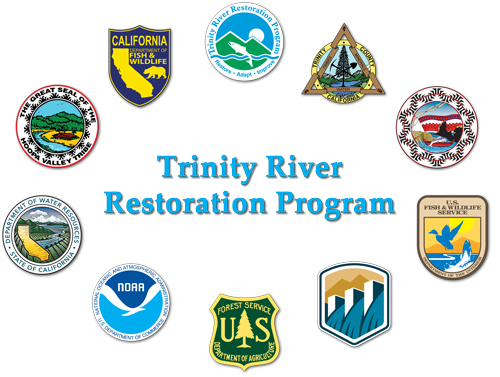
January 18, Special TMC Meeting 10am (virtual or call-in only)
TMC will meet to consider a compromise winter flow proposal that has been developed in collaboration with Trinity County.
Join on your computer, mobile app or room device
Download Teams | Join on the web
Click here to join the meeting
Meeting ID: 217 908 606 096
Passcode: DEjCq4
Or call in (audio only): 1-202-640-1187
Phone Conference ID: 425 816 505#
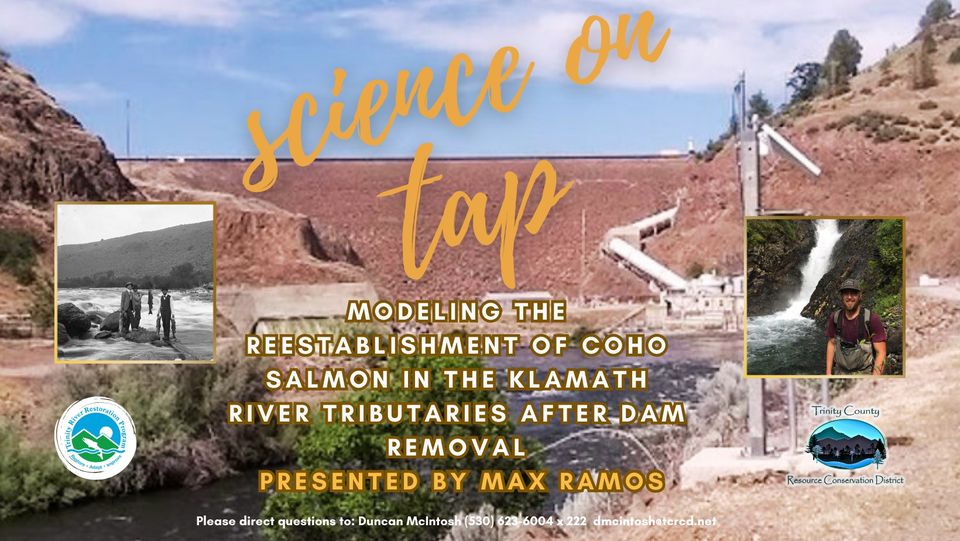
January 24, 6pm – Science on Tap
Trinity County Brewing Company
On Wednesday January 24, we are thrilled to host Max Ramos for our first Science on Tap of the year. Max, a restoration engineer with the Yurok Tribal Fisheries Department, brings expertise in fisheries issues and river restoration. He’ll present “Modeling the Reestablishment of Coho Salmon in Klamath River Tributaries after Dam Removal.”
With a B.S. in Environmental Engineering from Cal Poly and an M.S. in Fisheries Biology from Humboldt State University, Max works with river ecosystem recovery in the Klamath Basin. His focus is on sustainable management and conservation in a changing climate.
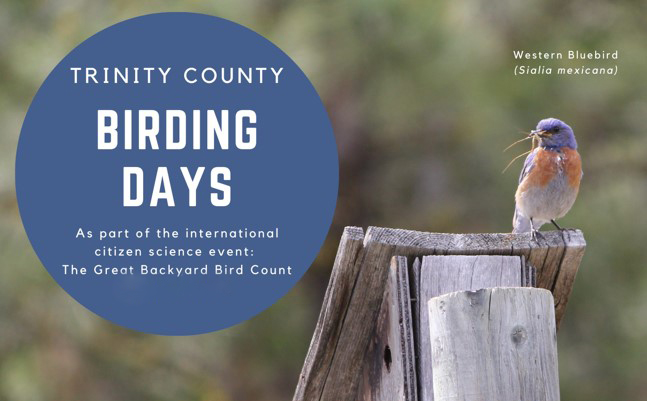
February 16-19 – Great Backyard Bird Count – Birding Days
Weaverville, Ca. & Worldwide
It’s that time of year again when you can join people across the globe for the annual Great Backyard Bird Count to contribute data to improve scientists’ understanding of location and size of bird populations prior to migration. The 2024 Backyard Bird Count, February 16-19, is fun for all ages and a great way to get outdoors this winter.
If you would like to record bird sightings from your backyard or other places in Trinity County go to birdcount.org/participate/ for more information.
Contact Us
Call Us: 530-623-1800 Email Us: info@trrp.net
